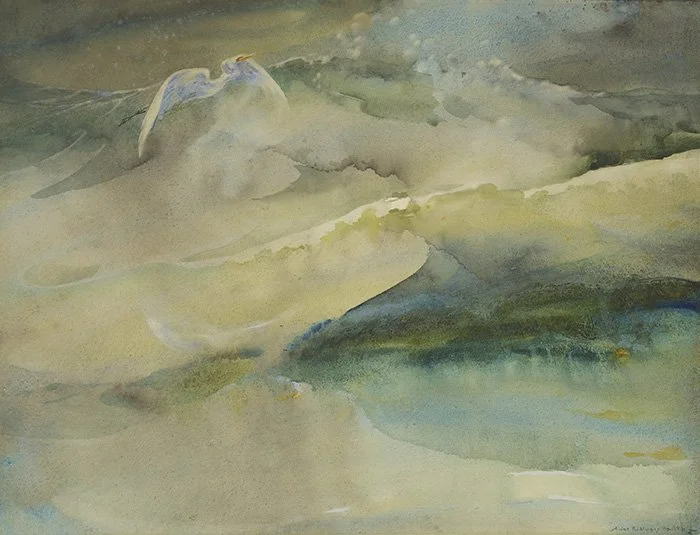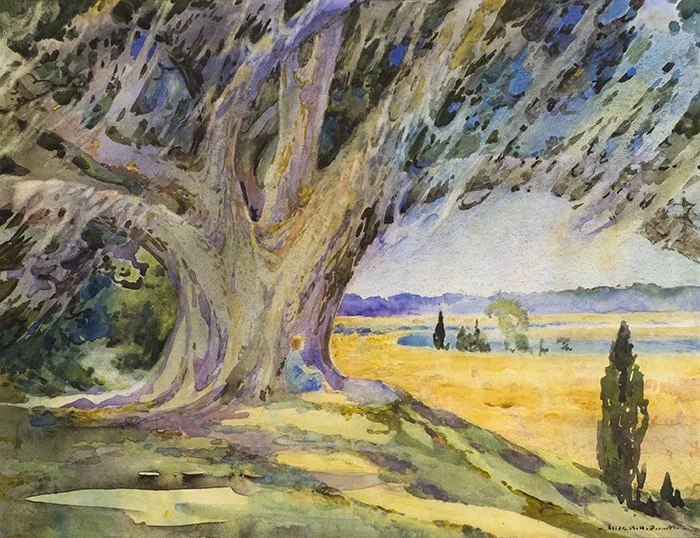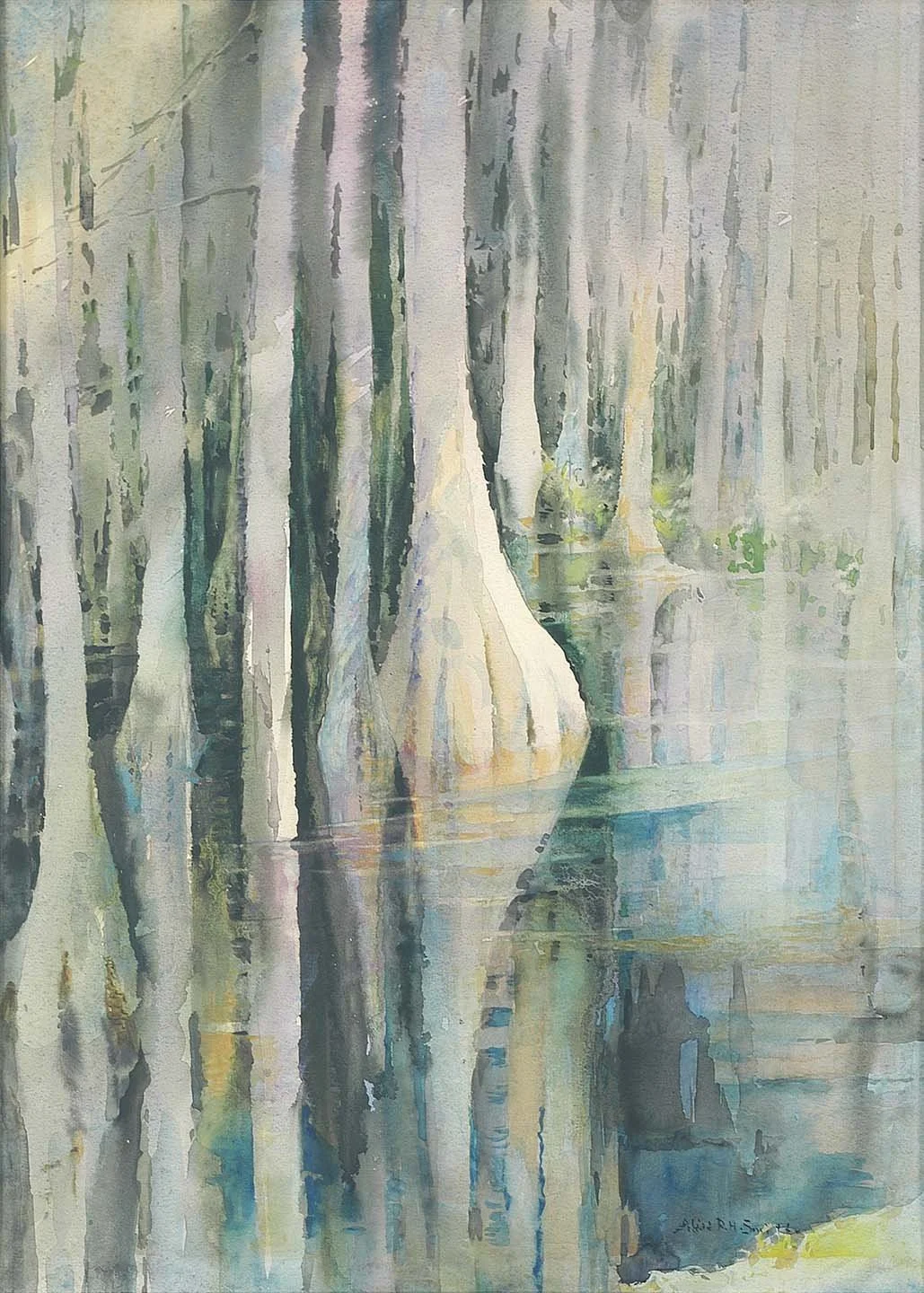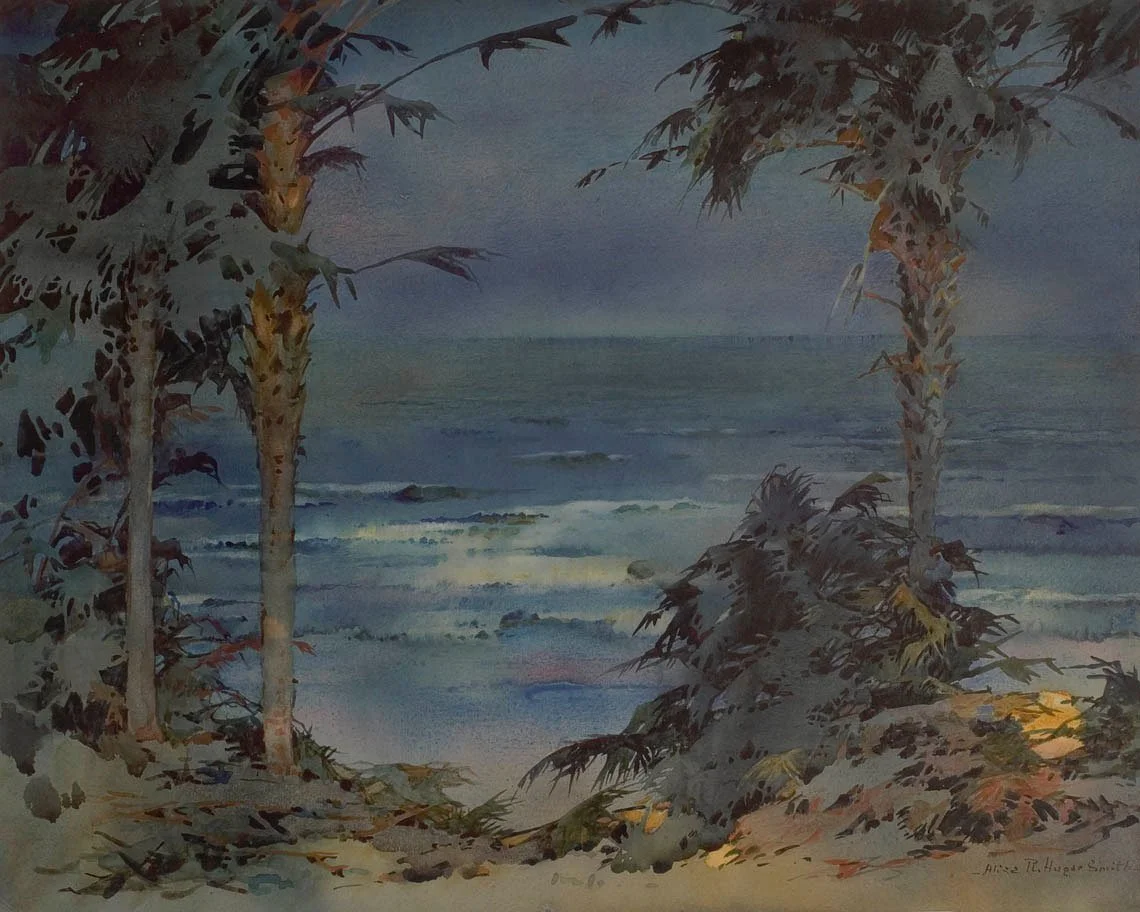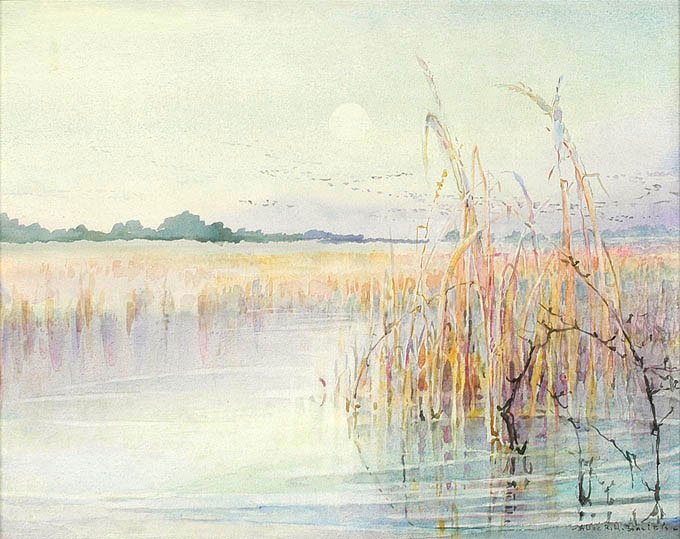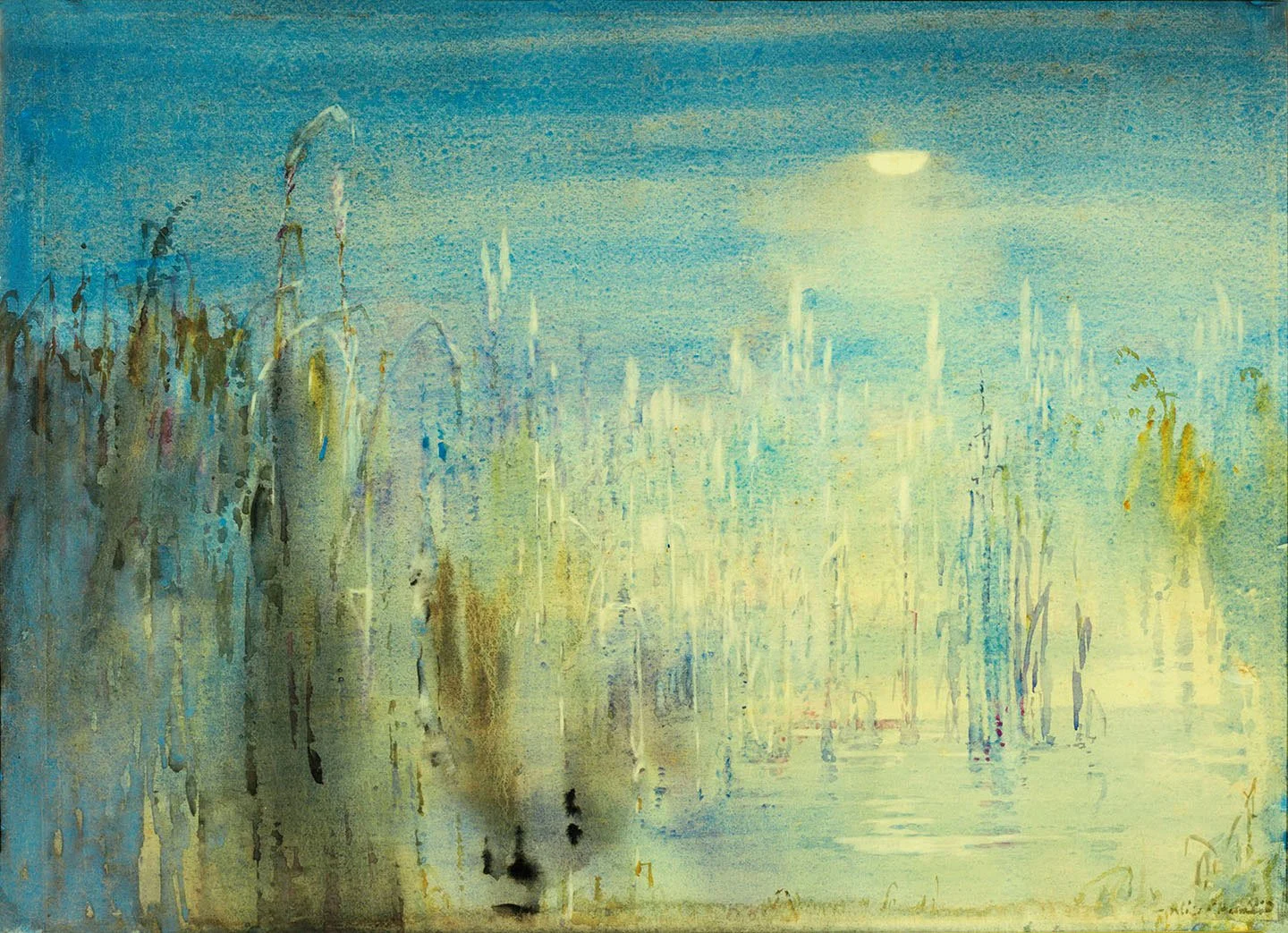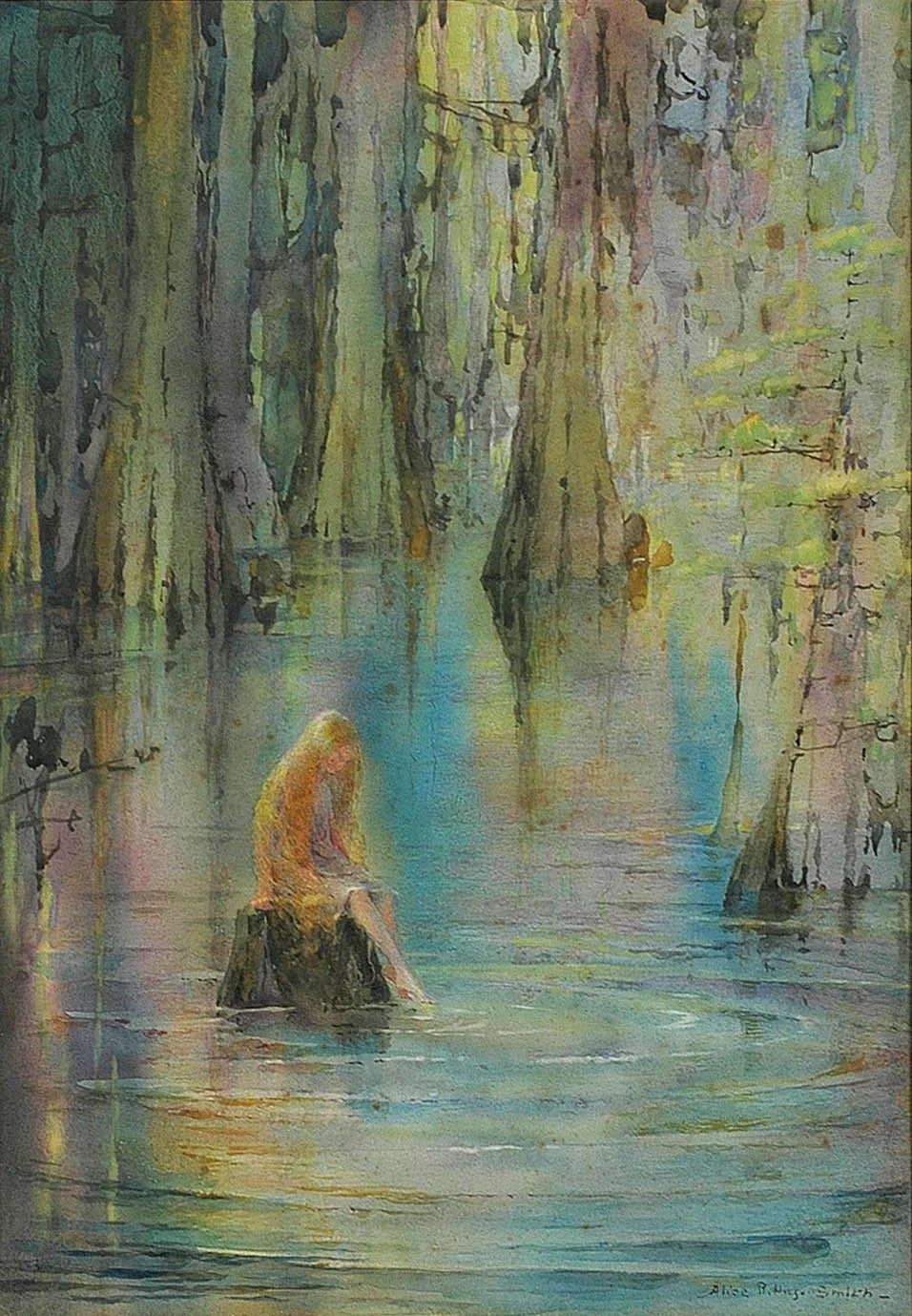Charleston Renaissance: Alice Ravenel Huger Smith
South Carolina’s lowcountry is home to uniquely enchanting landscapes, and the marshes and shores are especially magical in the paintings of Alice Ravenel Huger Smith. Born in Charleston in 1876, she became one of the leading artists of the Charleston Renaissance, and was a leader in the city’s artistic and preservation-minded communities.
Though she took some classes at the Carolina Art Association (today the Gibbes Museum of Art), Smith was largely self-taught. She explored a variety of media including woodblock printing, etching, oil painting, and watercolor, which became her primary medium and for which she is best known. Initially, Smith focused on portraits, painting family and friends. Throughout the 1910s, she experimented with etching and woodblock printing. Though her mastery of color meant she found more success with her print work, she went on to help found the Charleston Etcher’s Club and taught the medium during the 1920s, including to fellow Charleston Renaissance artist Elizabeth O’Neill Verner.
Early in her career, Smith contributed to the growing interest in historic preservation with architectural illustrations for works focusing on Charleston’s historic buildings. One of these was a book written by her father, historian D.E.H. Smith, which focused on Charleston’s historic homes and helped spark the preservation movement in the city. Another of her best-known works is a series of watercolor paintings depicting life on a rice plantation, a series that depicted a difficult and fading way of life in a romanticized manner, but displayed her mastery of the medium and her love for the land.
Though she rarely left Charleston, Smith was inspired by visiting artists to the city, particularly the work of Helen Hyde, known for her woodblock prints inspired by traditional Japanese paintings and prints; and L. Birge Harrison, a painter associated with the Tonalism movement of the late 19th and early 20th centuries. Their influence can be seen in Smith’s distinctive paintings, particularly in her compositional choices and use of soft, moody colors.
While many of her contemporaries focused on scenes of Charleston’s urban life - known and loved for its romantic, historic architecture - Smith is best known for her landscapes, which depict the mossy trees, dense swamps, and salt marshes of the lowcountry. There is a soft, dreamy quality, bordering on impressionistic, to her paintings of South Carolina’s wild places. Her watercolors masterfully utilize negative space to convey the rich textures of moss-draped cypresses and wind-tossed palmettos; her loose clouds of color evoke the salt-scented haze of a still, humid morning over tidal creeks.
Her landscapes are rarely populated by any figures other than the elegant wading birds of the marshes: snowy egrets perched on branches; a heron soaring over sunlit waves. When she does include humans in these spaces, they are presented less as subjects themselves and serve more to emphasize the majesty of nature: a faceless young woman stands cradled by a massive live oak; a girl sits, fairy-like, atop a stump in a swamp, surrounded by cypresses that block out the sky; a shrimp-catcher all but disappears into the foliage of the marsh. Her love for the land fills each frame: “nature I loved, and after nature, art.”
More South Carolina Artists:
Alfred Hutty | Elizabeth O’Neill Verner | Ned Jennings | William Halsey | Jasper Johns | Merton Simpson




